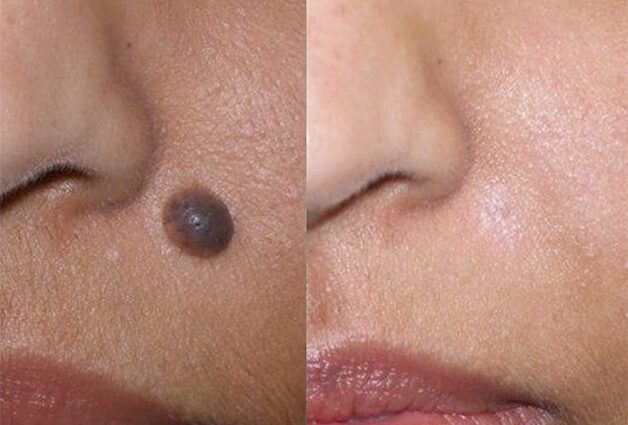Contents
Laser removal of a mole
A cosmetic complex or a suspicious appearance can lead to a removal of a mole. While ablation was the most popular method, another now competes with it: the laser. Is this method simpler? Is it safe?
What is a mole?
A mole, or nevus, is an anarchic cluster of melanocytes, in other words cells that color the skin.
Moles are benign and do not present a problematic character when they are uniform in color, without roughness, and their diameter does not exceed approximately 6 mm.
Some people have a lot more than others and therefore need to be especially watched. Especially if they know of cases of melanoma in their family, or if they have had a lot of sunburn in the past.
In this case, dermatologists advise to make an appointment every year and monitor your moles. For other cases, any abnormal development of a mole should be promptly reported to your doctor.
Moreover, to contradict a received idea, a scratched mole is not dangerous.
Why have a mole removed?
Because it is unsightly
On the face or on the body, moles can be unsightly. This is often a very personal perception. But, more often on the face, this is something that is immediately visible and can get in the way. Or, on the contrary, to be an element that signs a personality.
But having a mole removed that you don’t like, without being potentially dangerous, is a common surgical procedure. Dermatologists call this an excision or ablation.
Because he has a suspicious character
If a mole is suspicious and poses a risk of melanoma according to your dermatologist, it will be removed. In this case, only surgical removal is possible because it is necessary to analyze the nevus. The purpose of the laser is to destroy the mole, it is impossible to make an assessment afterwards.
In all cases, before performing a laser removal, the practitioner must ensure that the mole is not dangerous.
How is a laser removal of a mole performed?
The fractional CO2 laser
The carbon dioxide laser technique has been used for over 25 years in aesthetic medicine. This is a method for smoothing the skin and its defects, its scars. The laser is thus used as an anti-aging technique.
On a mole, the laser works in the same way by destroying the cells responsible for the dark coloration.
This intervention, which remains a surgical act, is performed under local anesthesia.
Advantages over conventional ablation
Previously, the only solution to having a mole removed was to cut the area and remove it. This simple and safe method can still leave a slight scar.
When it concerns the body, it is not necessarily embarrassing, but on the face, replacing a mole with a scar – even barely visible – is problematic.
Still, the laser, if it does not bleed, can leave a very slight mark. But it is more limited than in surgery because the laser makes it possible to better delimit the area.
Risks of laser
In March 2018, the National Union of Dermatologists-Venereologists itself voted for a ban on the laser destruction of moles.
Indeed, for specialists, a mole, even removed for a simple aesthetic discomfort, must be analyzed. The laser therefore prevents any recourse to a posteriori analysis.
Having a laser mole removed, when it could pose a risk of melanoma, can have serious consequences. Starting with the non-analysis of the surrounding area of the mole.
The price and refunds
The price for the laser removal of a mole varies between 200 and 500 € depending on the practice. Social Security does not reimburse the removal of a laser mole. It only reimburses the surgical removal of pre-cancerous or cancerous lesions.
However, some mutuals partially reimburse laser interventions.










